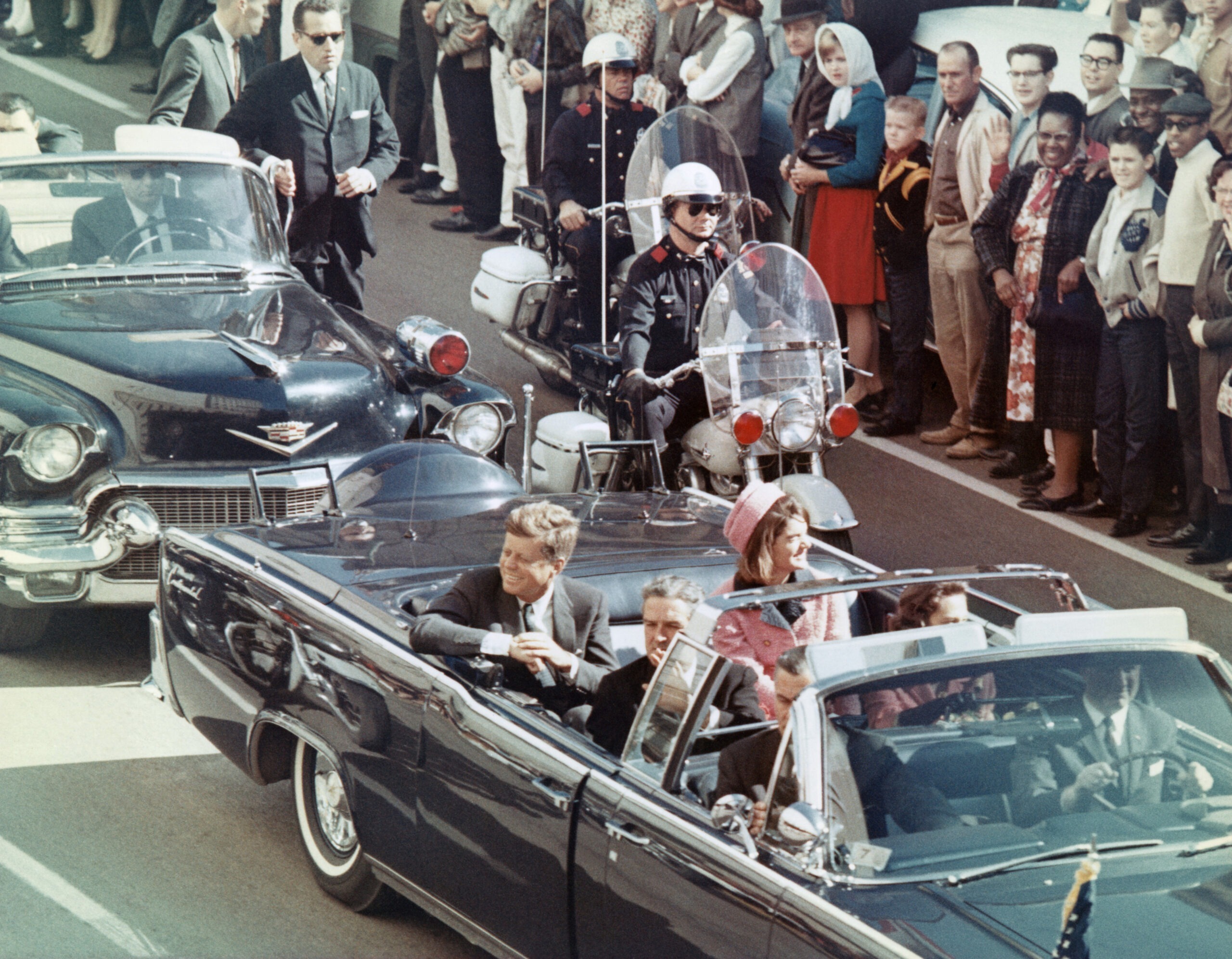
Newly released documents breathe life into a decades-old question: was the lone gunman theory ever enough?
By Carlos Taylhardat | 3 Narratives News
“I’d rather live dreaming, and die dreaming, than live a life defeated.”
The assassination of President John F. Kennedy on November 22, 1963, remains one of the most scrutinized moments in American history. The official account—delivered within days—claimed that Lee Harvey Oswald acted alone. A lone gunman. A troubled man with Soviet ties, allegedly disillusioned and angry, who fired three shots from the Texas School Book Depository in Dallas.
It was a story that, on the surface, fit neatly into Cold War fears. Oswald had defected to the Soviet Union and later returned to the U.S., fitting the profile of a possible double agent. Some believed the Kremlin was exacting revenge for Kennedy’s hardline stance during the Cuban Missile Crisis. The first narrative was clean. Contained. Convenient.
But now, 60 years later, newly declassified government documents are cracking open that tidy account. A new wave of doubt is taking shape—one with evidence, not just speculation. And that new narrative is calling into question the very foundation of what we’ve believed.
The Second Narrative: What If It Wasn’t Just Oswald?
There have always been questions: Could a lone shooter really pull off three shots with deadly precision in under eight seconds using a bolt-action rifle? Why was Oswald himself murdered just two days later in a police station teeming with law enforcement?
In Oliver Stone’s film JFK (1991), New Orleans District Attorney Jim Garrison—played by Kevin Costner—lays out a scenario suggesting Kennedy’s murder was a coup d’état from within. In a remarkable twist, the real Jim Garrison even appears in the film, portraying Chief Justice Earl Warren, whose commission bore his name.
Stone’s theory? The CIA had motive and means. Kennedy had threatened to “splinter the CIA into a thousand pieces and scatter it to the winds” after the disastrous Bay of Pigs invasion. He was considering disengagement from Vietnam and pursuing détente with the Soviet Union—moves that allegedly enraged powerful interests in intelligence and military circles. (The Atlantic)
What We’ve Learned From the New Files
Declassified files—released between 2017 and 2025—include thousands of documents from the FBI, CIA, and other agencies. Some confirm what conspiracy theorists had long suspected: the government withheld key details, and the CIA tracked Oswald more closely before the assassination than previously admitted. (Washington Post)
According to historian Jefferson Morley, “The CIA was running a psychological warfare operation against Oswald before the assassination.” That information was kept secret for decades. (Mary Ferrell Foundation)
Also revealed were reports of two additional assassination attempts on Kennedy in the weeks leading up to Dallas—one in Chicago and one in Tampa—both with eerily similar patterns: a lone suspect, a high-powered rifle, and vanished paper trails. (History.com)
This isn’t just “conspiracy theory.” These are threads that suggest coordination, silence, and intent—perhaps not a single smoking gun, but a mosaic of shadows.
Who Wanted JFK Dead—And Could?
The uncomfortable answer: multiple groups had motive. The CIA, disgruntled by Kennedy’s diplomacy. High-ranking military officials, angered by his reluctance to escalate in Vietnam. Elements of organized crime, enraged by his brother Robert’s prosecution campaigns. Even powerful financiers uneasy with his economic policies.
Could they have done it? The means were available. The new files show how tightly information was controlled, how quickly narratives were shaped—and how those in power had both motive and machinery.
Key Revelations from the March 2025 Release
- CIA Surveillance of Oswald: Confirmed monitoring of his Soviet and Cuban contacts before November 1963 (AP).
- Exposure of Personal Data: Some files included sensitive personal information, sparking criticism of the release process (ABC News).
- Intelligence Operations: The files shed new light on Cold War CIA activities, expanding our understanding of clandestine operations.
- Public Impact: Historians say the release rekindles public interest and raises new questions, though definitive answers remain elusive.
👉 Explore the documents here: National Archives – JFK Assassination Records
Why It Still Matters
In an era plagued by misinformation and distrust, revisiting the JFK assassination isn’t about chasing ghosts—it’s about understanding how power, secrecy, and narrative intersect. That’s why 3 Narratives exists: not to tell you what to believe, but to lay out at least two versions of the story—so you can form the third: your own.
Related Reads
The History of All Politics: Left, Right, and Everything Else | Global Protest Coverage | War of Ukraine and Russia — Bad Call
Thanks for sharing. I read many of your blog posts, cool, your blog is very good.
Thank you for your sharing. I am worried that I lack creative ideas. It is your article that makes me full of hope. Thank you. But, I have a question, can you help me?